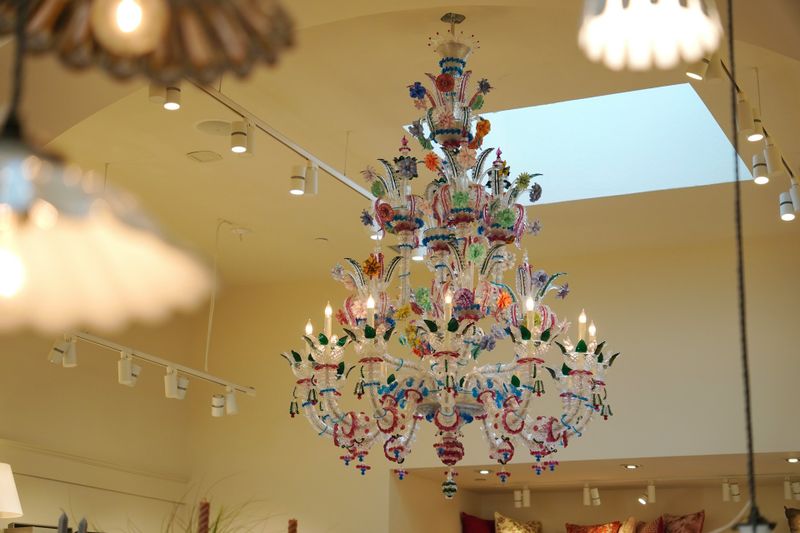Travelers, today we talk about one of the most common and insidious traps a tourist can fall into in Venice: fake Murano glass. Yes, really! It sounds crazy, but even in the land of artistic glass itself you can find cheap imitations, mass produced elsewhere and sold as authentic Venetian masterpieces.
If you’re planning to visit the Serenissima and want to bring home an authentic souvenir – whether it’s a small trinket or an art piece in glass – you need to know how to tell the real from the fake. You don’t want to pay hundreds of euros for a glass made… in China, right?
Find out everything in this guide by Venice Insider Guide, for curious, intelligent and beauty-loving travelers.
Fake Murano Glass
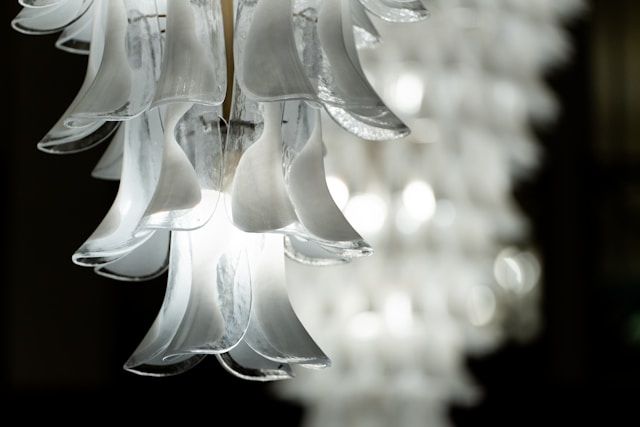
Murano glass is an Italian artisanal excellence that dates back to the 13th century. Murano, one of the Venetian islands, is the birthplace of this tradition. But as with many high-value products, even Murano glass has become a target for counterfeits.
Fake Murano glass is everywhere: in tourist shops, markets, online and even in some Venetian boutiques that seem trustworthy. These fakes are often made at a low cost, especially in China or other Asian countries and sold as authentic art pieces.
The problem? Not only the customer is deceived, but the entire Murano tradition is devalued and forgotten.
Chinese Fake Murano Glass
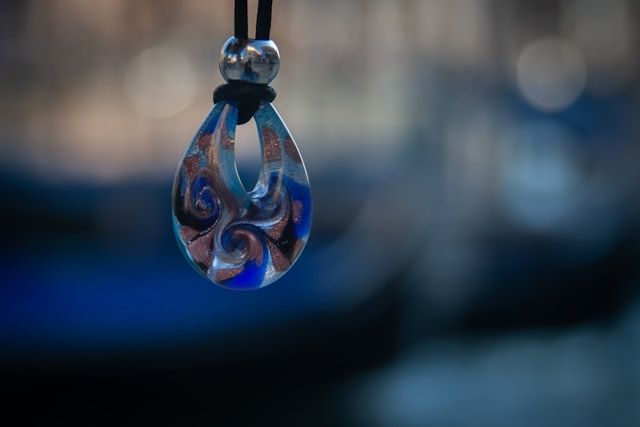
The global market is flooded with “Murano inspired” products, but often this inspiration is just a polite way of saying “blatant copy”. China is one of the main producers of glass similar to Murano.
These objects are:
- mass produced,
- without artistic value,
- made with low quality materials,
- sold at low prices but sometimes passed off as original.
The problem is that many tourists can’t tell the difference, and sometimes not even the less honest shopkeepers do. Sometimes Chinese fakes are even imported to Italy and sold with Italian labels. A real shame.
So it’s essential to know the signs of genuine Murano glass and learn to spot the fakes.
How can I tell if a glass is Murano?
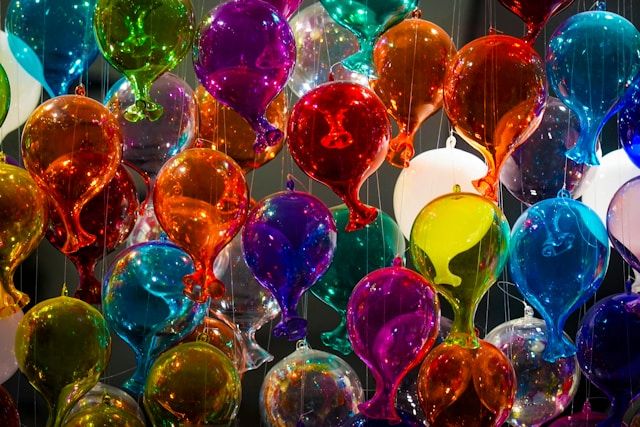
You’re asking: How do I know if it’s authentic Murano glass or just a copy?
Here are some tips:
- Look for the Vetro Artistico® Murano label
It’s an official stamp, released by the Veneto Region, that guarantees the object is authentic. If it’s missing, be suspicious. - Ask for the authenticity certificate
A genuine Murano glass object always comes with a certificate with logo, description, signature and provenance. - Check the details
Murano glass is imperfect… in the right way. Small air bubbles, slight asymmetries or color variations are the sign of handmade work.4. Beware of too low prices
A Murano vase for 30 euros? Unlikely. A handmade object with precious materials requires time and skill. The price reflects that. - Visit the workshops in Murano
Want to be sure? Take a tour of the furnaces in Murano, see the artisans at work and buy directly on site.
Signs of fake Murano glass
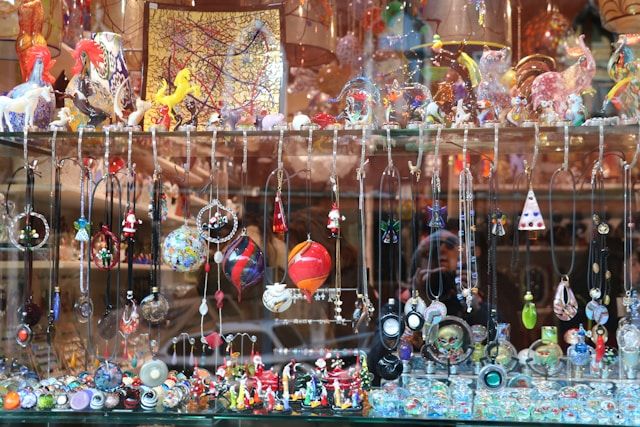
Besides the previous tips, here are more subtle signs to know:
- General labels like “Murano style” or “handmade in Venice” are often misleading. Only “Made in Murano” with certification is reliable.
- Too bright and artificial colors: fakes often use unnatural and shiny colors, obtained with paint, not with glass pigments.
- Unusual weight: many fake objects are lighter (or heavier) than those made with high quality Murano glass.
- Boring or repetitive designs: mass production tends to repeat the same subjects (fish, hearts, flowers) in a kitsch way.
Open eyes: the original is recognizable… but only if you know what to look for.
Things to know about fake Murano glass
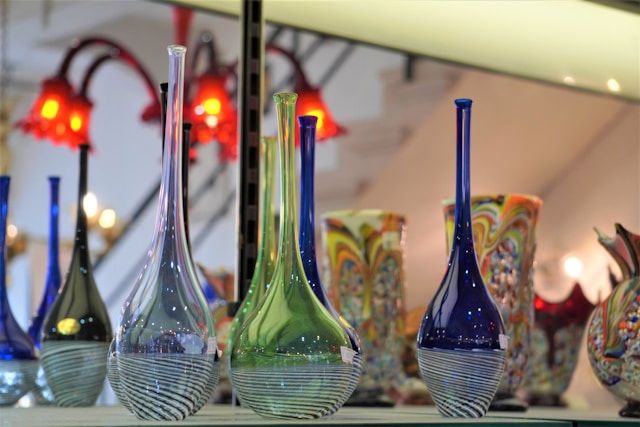
Fake Murano glass is not just a scam for your wallet, but a cultural and legal problem.
According to Original Murano Glass, here are 8 things tourists don’t know:
- Only glasses produced in Murano can be called “Murano”. The rest is imitation.
- The term “Murano style” is legal, but misleading.3. Each master glassmaker has his own style, so two similar objects will never be identical.
- Murano artisans sign some of their works with their name or the name of the furnace.
- Buying fakes feeds a market that destroys local craftsmanship.
- Real Murano pieces take time: hours, sometimes days.
- Murano glass lasts over time, while fakes tend to fade or break easily.
- There are reliable online boutiques, but only if they show clear licenses and certifications.
Glass vs Murano glass
Not all glass is created equal.
- Common glass is often industrially produced, in large quantities, with cheap raw materials and little attention to detail.
- Murano glass, instead, is an art: born from a mixture of silica, sodium and other minerals fused at over 1,000°C, then handcrafted by master artisans with techniques passed down for centuries.
The difference is seen in:
- translucency,
- thickness,
- transparency,
- unique colors (thanks to the use of minerals and metallic oxides like gold and copper),
- complex design.
Fun facts about Authentic Murano glass
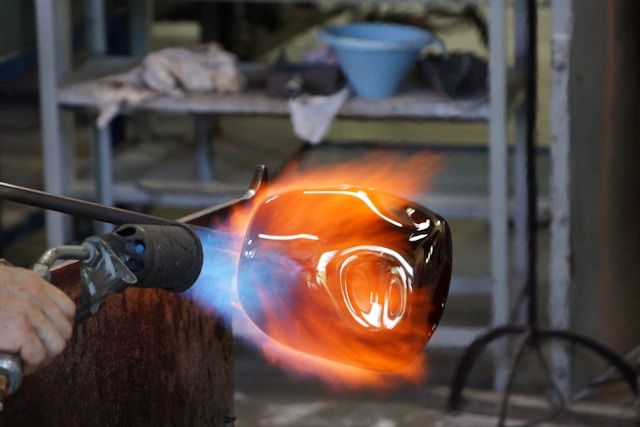
Want some historical and fascinating tidbits?
- In 1291, to prevent fires in Venice, all the furnaces were moved to the island of Murano.
- Master glassmakers were so valuable to the Republic that they couldn’t leave the island without permission.
- Many Murano glassmakers were also… industrial spies. Their techniques were top secret!* Gold is used in very thin sheets to decorate some luxury objects.
- Some Murano glasses are collected in museums all over the world, from the MoMA in New York to the Victoria & Albert Museum in London.
Original Murano glass high quality
Buying real Murano glass means bringing a piece of Venice home. It’s not just a souvenir: it’s a story, a tradition, a small work of art.
Here’s where to buy with confidence:
- Directly in Murano, at the furnaces open to visitors.
- Official licensed shops in central Venice (avoid street vendors and touristy little shops).
- Online only from certified sellers with verified reviews and visible licenses.
And remember: the real one costs, but it’s worth every cent.
Genuine Murano glass features
Want to become a true expert? Take note of these key features:
- Handmade: every object is born from the fire and the manual blowing.
- Unique colors: obtained with minerals and metals, not dyes.
- Soft shapes, refined details: every imperfection is a sign of authenticity.
- Historic techniques: murrine, filigrana, sommerso, lattimo, avventurina…
- Balanced weight and smooth texture: to the touch, Murano glass is compact but elegant.
Conclusion
Dear travelers, beware of fake Murano glass: word from Venice Insider Guide!
Murano glass is not just a decorative object, it’s a fragile but precious cultural heritage, forged in the fire, passion and Venetian history.
Don’t get fooled by Murano fakes. Be curious, ask questions, look at the details. And when you find the right one, you’ll know: it’s love at first sight.

